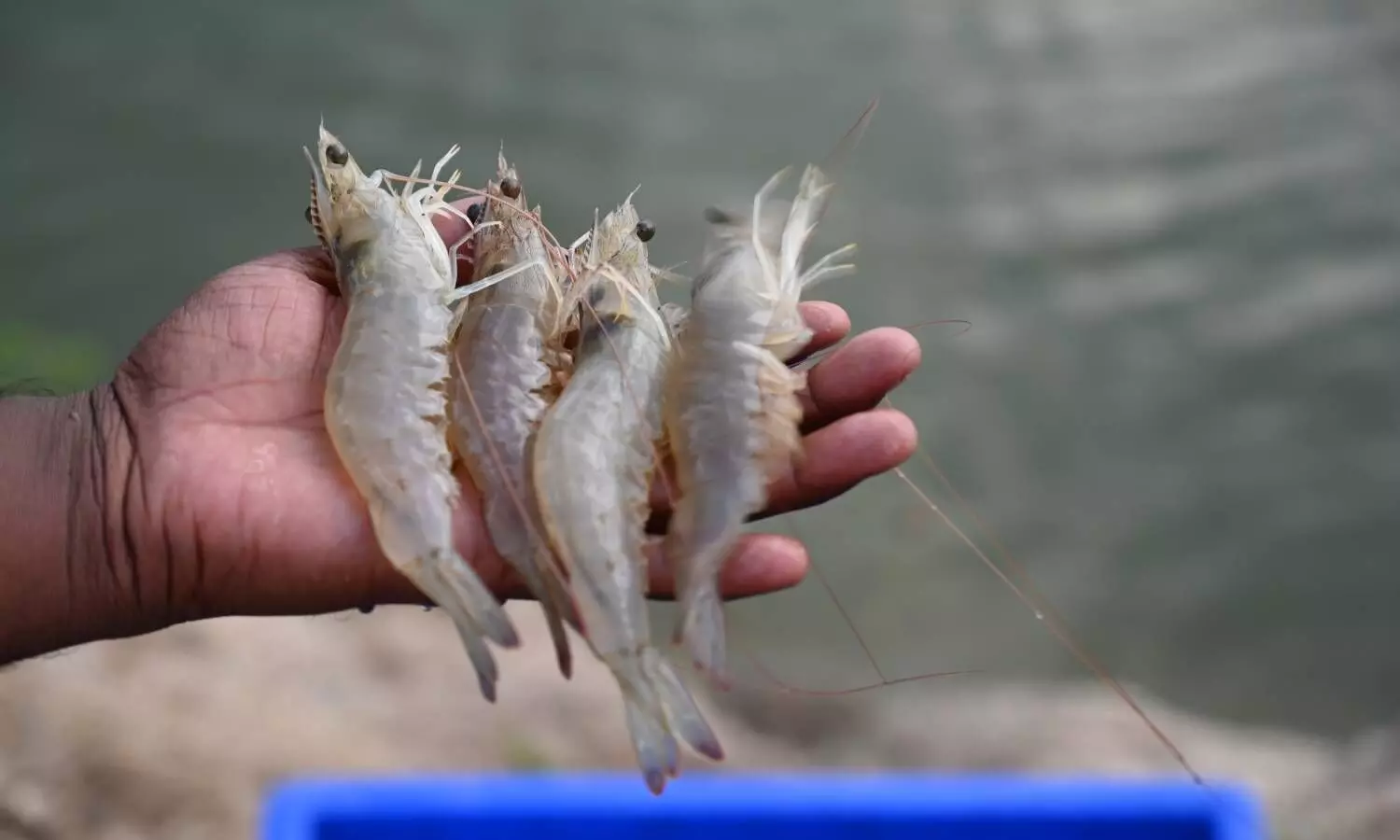How Narayanpet fishermen are harvesting profits from prawn culture
From feed to manpower to aerators to electricity, prawns require huge maintenance costs. But the farmers of Narayanpet, from their experience has learnt that they yield good profits too.
By Nimisha S Pradeep
He carefully removes the tangles on his fishing net. In a count of one, two, and three, he swings and casts the net onto the waters. He reels in and waits patiently for the bait to hook. He pulls it up slowly, lo and behold! 10-12 transparent cream-colored fishes with two long antennae and black protruding eyes!
Litopenaeus Vannamei or the white leg shrimp is a prawn variety commonly found in the Eastern Pacific Ocean. But it's a lifeline for the farmers of Hindupur in Narayanpet district.
Three years back, Malla Reddy and Amar Dikshit joined hands and bought 16 acres of land, 10 acres for Reddy, and 6 acres for Amar in Hindupur to practice aquaculture. It required a lot of investment and maintenance cost because it was prawns but they hoped to get a good catch. And soon they learnt that it's profitable.
The first and foremost step in breeding prawns is to prepare the environment in water for the prawns. "We use the water that comes from Krishna River. But it's less salty. Salt is essential for the prawns. So we get additional salt and add it to the water to make it livable for the prawns," says Malla Reddy. They also add minerals like magnesium chloride into the water.
Once the water is ready, the prawns are brought and dropped. They bring prawns aged 11 to 15 days post larva from Pondicherry, Kakinada, and Nellore. After 15 days, they grow 2-3 inches long. After the entire culture period of 150-200 days, they grow into their full size of 8 to 9 inches.
Maintenance for prawns
From feed to manpower to aerators to electricity, prawns require huge maintenance costs. "Oxygen is a must for the prawns to survive. So the aerators have to be on throughout the night from 7 pm to 7 am," says Amar.
A man rides slowly around Cheruvu on a small boat following the white marker wires tied along the length and breadth of the lake. He takes out a handful of feed from a basket loaded onto the boat and throws it widely into the waters.
The baby prawns have to be fed in powdered form. Every day, the prawns consume up to 40 kgs of feed amounting to Rs 10,000 investment for feed alone per day.
A total of six people look after the prawns.
"Prawns require more maintenance, but they yield good profits too," says Anil Kumar, District Officer at Fisheries Department and also a part of the prawn farming.
"If there is a good catch, we become billionaires. But if the prawns die, we will have to sell everything," he funnily puts the reality.
So far, the catch has been good. In the 2-3 harvests completed, these farmers have been able to yield around 3 quintals of prawn per year.